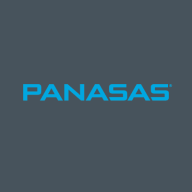

Panasas ActiveStor and Nasuni compete in the file storage solutions market. Nasuni seems to have the upper hand due to its comprehensive features and strong cloud capabilities.
Features: Panasas ActiveStor offers high-performance storage, scalability, and simplified data management, focusing on accelerating workflows and enhancing productivity for demanding applications. Nasuni provides extensive cloud integration, centralized file storage, and flexibility, ideal for organizations prioritizing remote collaboration and easy data access.
Ease of Deployment and Customer Service: Panasas ActiveStor integrates seamlessly into existing infrastructures with minimal disruption and offers responsive customer service for enterprise needs. Nasuni features easy cloud-based deployment and strong support for cloud-based deployments, catering to distributed teams seeking quick access to files.
Pricing and ROI: Panasas ActiveStor has competitive setup costs, providing appealing ROI for high-performance storage needs in specific industries. Nasuni's higher setup cost is justified by long-term value through cloud-centric features enhancing collaboration and scalability, making it a worthwhile investment.

Nasuni is a file data services enterprise focused on assisting firms with their digital transformation, global expansion, and information awareness. The Nasuni File Data Platform is a suite of cloud-based services designed to enhance user productivity, ensure business continuity, provide data intelligence, offer cloud options, and simplify global infrastructure. This platform and its auxiliary services are projected to replace conventional file infrastructure such as network attached storage (NAS), backup, and Disaster Recovery (DR), with an expandable cloud-scale solution. By storing file data in scalable cloud object storage from multiple providers, Nasuni positions itself as a cloud-native alternative for traditional NAS and file server infrastructure. Based in Boston, Massachusetts, USA, Nasuni serves sectors like manufacturing, construction, technology, oil and gas, financial services, and public sector worldwide, offering its services in more than 70 countries.
James J., IT Manager at a marketing services firm, says Nasuni’s management dashboard is helpful because he's able to view all of the different filers at once rather than check each one of them individually. He values the software’s security, reliability, good performance, helpful alerting, and responsive support.
According to a Server Engineering Services Lead at a mining and metals company, Nasuni offers good OR and DR capabilities, performs well, offers data security, and continuous file versioning helps recover from hardware failures.
The Managing Director of IT at a construction company appreciates Nasuni because it eliminates a lot of work that was previously done when managing backing up and restoring data files.
In our most recent product, the ActiveStor Ultra, Panasas has developed a new approach called Dynamic Data Acceleration Technology. It uses a carefully balanced set of HDDs, SATA SSD, NVMe SSD, NVDIMM, and DRAM to provide a combination of excellent performance and low cost per terabyte.
• HDDs will provide high bandwidth data storage if they are never asked to store anything small and only asked to do large sequential transfers. Therefore, we only store large Component Objects on our low-cost HDDs.
• SATA SSDs provide cost-effective and highbandwidth storage as a result of not having any seek times, so that’s where we keep our small Component Objects.
• NVMe SSDs are built for very low latency accesses, so we store all our metadata in a database and keep that database on an NVMe SSD. Metadata accesses are very sensitive to latency, whether it is POSIX metadata for the files being stored or metadata for the internal operations of the OSD.
• An NVDIMM (a storage class memory device) is the lowest latency type of persistent storage device available, and we use one to store our transaction logs: user data and metadata being written by the application to the OSD, plus our internal metadata. That allows PanFS to provide very low latency commits back to the application.
• We use the DRAM in each OSD as an extremely low latency cache of the most recently read or written data and metadata.
To gain the most benefit from the SATA SSD’s performance, we try to keep the SATA SSD about 80% full. If it falls below that, we will (transparently and in the background) pick the smallest Component Objects in the HDD pool and move them to the SSD until it is about 80% full. If the SSD is too full, we will move the largest Component Objects on the SSD to the HDD pool. Every ActiveStor Ultra Storage Node performs this optimization independently and continuously. It’s easy for an ActiveStor Ultra to pick which Component Objects to move, it just needs to look in its local NVMe-based database.
We monitor all NAS reviews to prevent fraudulent reviews and keep review quality high. We do not post reviews by company employees or direct competitors. We validate each review for authenticity via cross-reference with LinkedIn, and personal follow-up with the reviewer when necessary.